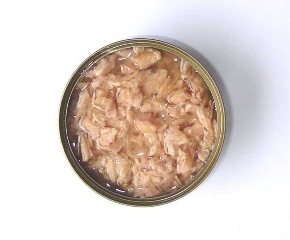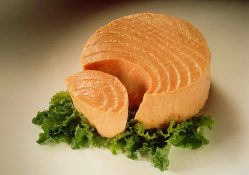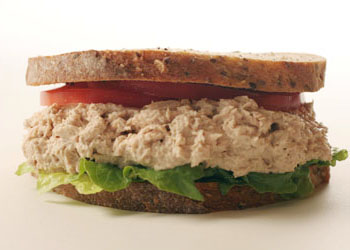 Formerly “weight challenged,” Denis Faye dropped 50 pounds following a 5-year jaunt through Australia, a trip that helped him become the extreme sports and fitness enthusiast he is today. His sports include swimming, scuba, rock climbing, spelunking, mountain biking, trekking, and—most importantly—surfing. He’s been a professional journalist for 20 years, writing for Outside, the New York Times, the Los Angeles Times, Los Angeles Magazine, Wired, Men’s Health, Men’s Journal, GQ, Surfer, and Pacific Longboarder. Denis now writes for Beachbody, which provides effective home workout dvds such as the very popular P90x program and the cardio workout dvd, TurboFire.
Formerly “weight challenged,” Denis Faye dropped 50 pounds following a 5-year jaunt through Australia, a trip that helped him become the extreme sports and fitness enthusiast he is today. His sports include swimming, scuba, rock climbing, spelunking, mountain biking, trekking, and—most importantly—surfing. He’s been a professional journalist for 20 years, writing for Outside, the New York Times, the Los Angeles Times, Los Angeles Magazine, Wired, Men’s Health, Men’s Journal, GQ, Surfer, and Pacific Longboarder. Denis now writes for Beachbody, which provides effective home workout dvds such as the very popular P90x program and the cardio workout dvd, TurboFire.
If ever a food confused health conscious eaters, it’s canned tuna. On one side, there’s the ascetic dieter, who eats the stuff right from the tin along side his single celery stick. On the other side, there’s your mom’s awesome cream-of-mushroom soup-drenched tuna casserole, which is trumped anti-nutritionally only by that greasy diner mainstay, the tuna melt. (True fact: in many restaurants, the tuna melt outdoes the hamburger for both calories and fat.)
And then there are the questions of mercury and overfishing and omega-3 fatty acids. Is this a healthy food or not? What’s a fish eater to do?
Fortunately, once you break it down, it’s not that complicated. As it turns out, a can of tuna can be healthy, ethical, and yummy – as long as your get your hands on the right can.
The Healthy Part
Tuna is a cold-water fish. The fat it uses to insulate itself against the cruel ocean depths turns out to be super healthy. Specifically, I’m referring to omega-3 fatty acids, which are unsaturated fats that help with, among other things, growth, brain function, and heart health. When it comes to omega-3s, though, all canned tuna is not created equal. “White tuna” is actually albacore and it has a much higher omega-3 concentration than “light tuna” which is usually skipjack, tongol, ahi, or bigeye.
So why not just stick to albacore? That’s the tricky part. Albacore is also higher in mercury, a heavy metal introduced into our oceans courtesy of industry. While great for thermometers, mercury is particularly nasty for developing brains and nervous systems, so if you’re a kid or a woman who’s nursing, pregnant or planning on getting pregnant, you’re better off sticking to light tuna. And even then, limit intake. The Environmental Defense Fund suggests no more than 12 ounces a month.
There’s been a little bit of hype lately over selenium, a healthy mineral prevalent in fish, which apparently counteracts the damaging effects of mercury. I, personally, take this theory with a grain of salt, given it’s largely based on studies using rats and birds as subjects, both of which have very different physiologies from humans.
Doom and gloom aside, if you’re a non-child-bearing adult, the benefits of high-omega-3 albacore outweigh the mercury issues. Although, moderation never hurts, so limit your intake to 1 or 2 servings a week. It’s always healthier to vary your protein sources. Also, the average person only benefits from .8g of protein per kilogram of body weight daily, so unless you’re trying to force ketosis, there’s little point in eating more. Finally, moderate seafood intake puts less strain on the ocean, which leads us to our second point.
The Ethical Part
A few years ago, the mainstream media got wind of the fact that tuna fishing was killing dolphins. The industry reacted swiftly – more to save their own skins than the dolphins – so now Flipper is safe. Unfortunately, plenty of other sea creatures without the PR benefits of a hit sixties kid’s show are still dying en masse thanks to tuna fishing. Specific victims include sharks, turtles, and seabirds. If you’re eating tuna from the big three, Starkist, Bumblebee, or Chicken of the Sea, odds are you’re getting a little bad karma with your can. And yes, I know that the trio has banded together to invest $100,000 annually to “protect sea turtles in the long-line tuna fishery” – but that’s a pretty sad little number for three such gigantic companies.
 By catch occurs mainly due to longlining, in which one long line pulls several other smaller lines. It’s also the easiest way to catch tuna. Trolling and old-school pole-and-line are much more humane, but much less cost effective. Not surprisingly, the big three are rather vague about which practices they use. They’re also shifty about where they catch their fish. Fortunately, there are still some robust tuna fisheries left, so if you stick to U.S. and British Columbia, you’re probably eating the product of a sustainable fishery.
By catch occurs mainly due to longlining, in which one long line pulls several other smaller lines. It’s also the easiest way to catch tuna. Trolling and old-school pole-and-line are much more humane, but much less cost effective. Not surprisingly, the big three are rather vague about which practices they use. They’re also shifty about where they catch their fish. Fortunately, there are still some robust tuna fisheries left, so if you stick to U.S. and British Columbia, you’re probably eating the product of a sustainable fishery.
If you head to your local market looking for a tuna label that clearly explains where the fish came from and how it was caught, you’re in for a long search. Fortunately, you can always look online. A couple brands I enjoy are American Tuna and Oregon’s Choice. They may be a little pricier, but you’re doing the right thing and, frankly, these little companies put a lot more care into preparing their wares, so they taste a lot better, which bring us to our last point.
The Yummy Part
First thing’s first. Fresh water packed is the only way to go. Oil-packed may taste better to some, but it also leaches the omega-3s from the fish.
As for how to prepare it, you’d be surprised at how tuna can act as a substitute for ground beef in various meat-based dishes, such as pasta sauces. You can also “crumble” it in a salad, letting the vinaigrette give it some zing.
Or, if you’re looking for an old-school tuna sandwich, try this recipe. No, it’s not your mother’s mayo-laden special, but it’s still a delicious, healthy way to get your omega-3s. Enjoy!
Ingredients:
- 1 can “white” tuna packed in water, drained
- 2 tsps extra virgin olive oil
- 1 tsp Dijon mustard (or more to taste)
- 2 tbsp finely chopped red onion
- 5 cornichons (small, French pickles), diced
Mix it all up and spread it across whole grain bread with a little lettuce and tomato, as well as the (healthy) condiments of your choice. Serves 3.
Nutrition Facts per serving: Calories: 105; Calories from fat: 43; Fat: 5 g; Saturated Fat: 1g; Cholesterol: 24mg; Sodium: 312mg; Carbohydrates: 1g; Protein 14g
___________________________________________________
Guest Blog Series: Look for the following badge on your favorite health sites to see if they have been a featured guest blogger on DietsInReview.com. See other posts in the Guest Blog series.
If you would like to apply to be featured as a guest blogger, please contact us.


